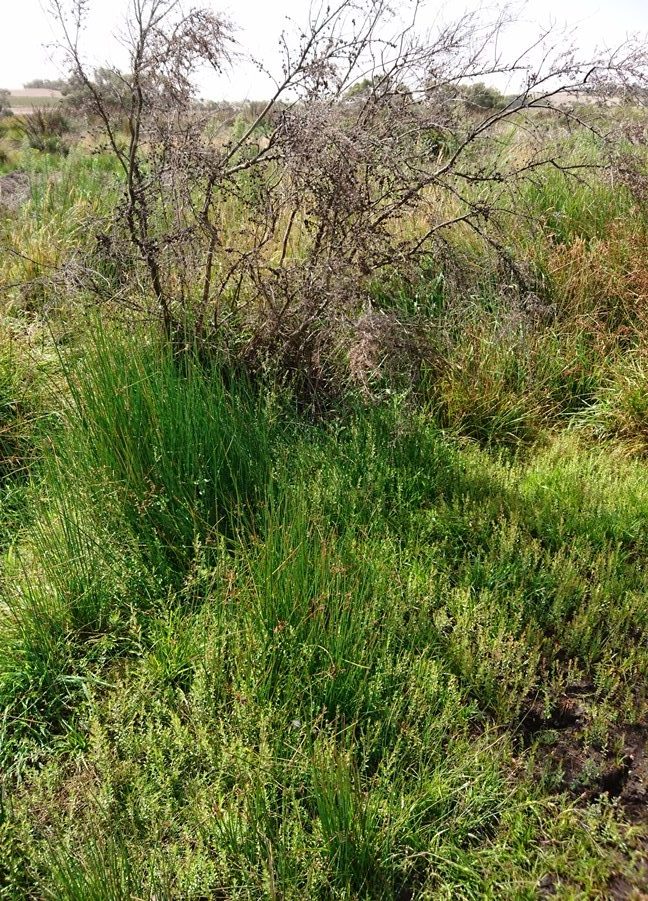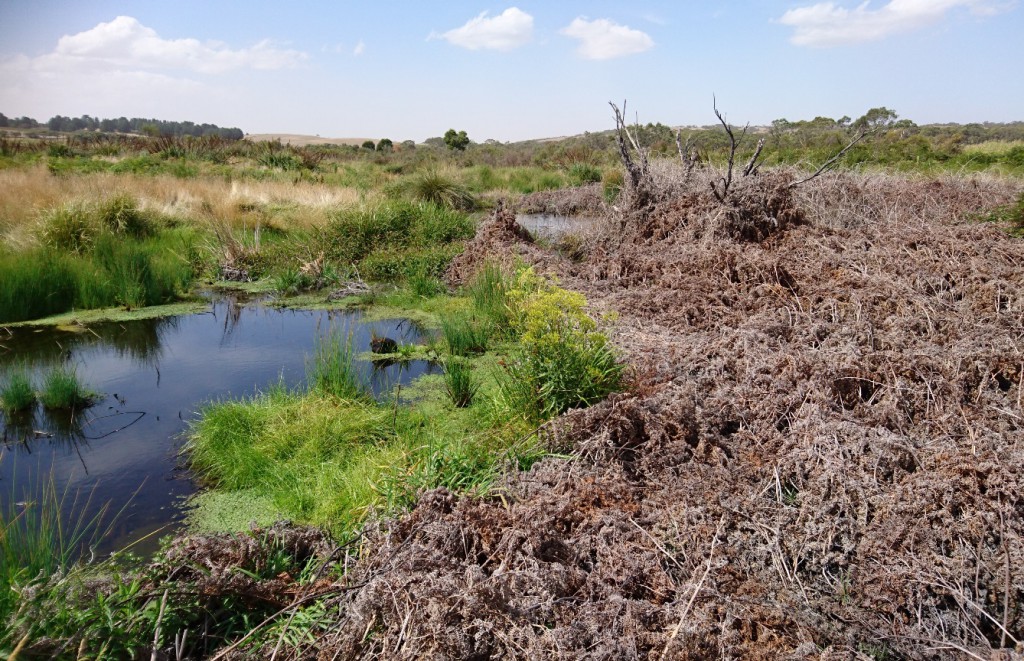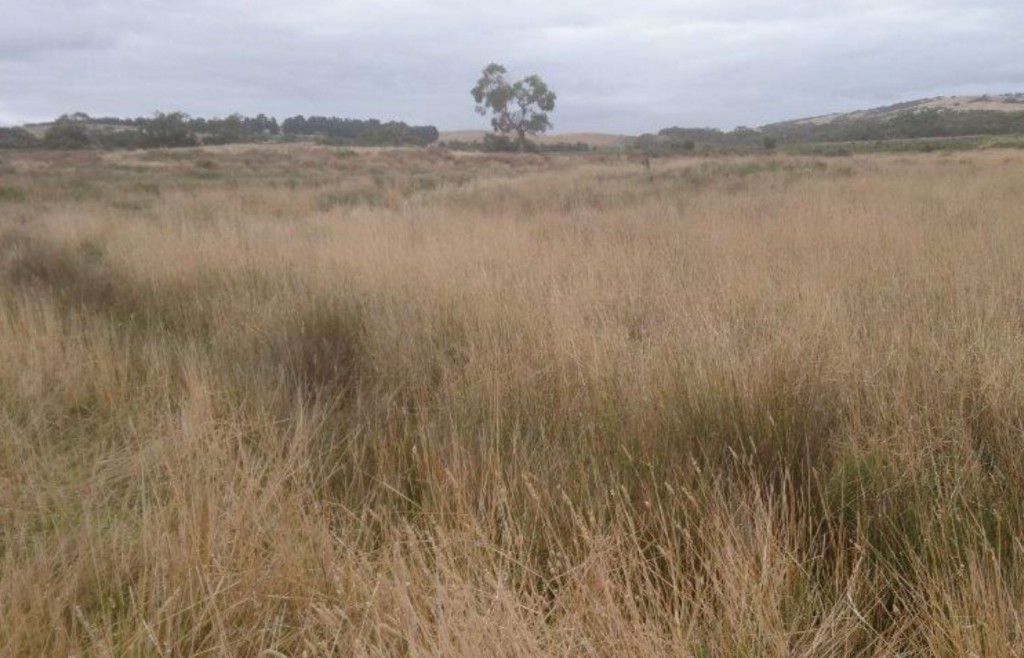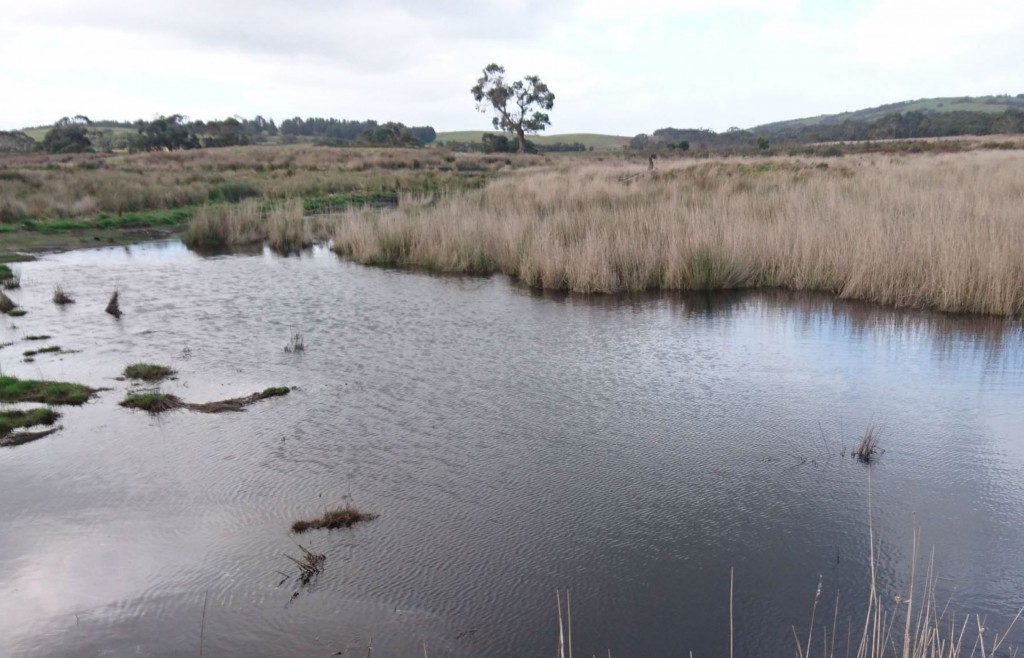Fleurieu Swamps restoration update – the latest news from Glenshera Swamp
Last week a small crew (Ben, Mark and Dale from NGT, along with Jason and Randall from DEWNR) headed back to Glenshera Swamp to make some minor adjustments and repairs to the structures we installed last year, both inside and outside Stipiturus CP. This also gave us a chance to get a sense of how the site is responding, 12 months since restoration works began.
In some exciting news – despite the short period of time that has elapsed and the lack of recent rainfall – the results of the restoration works are really starting to show.
The most pronounced impacts are being observed in the portion of the swamp on private land next to the Park, where a network of drains across a significant area of peatland were back-filled. Here, the peat has now resaturated, and the swamp vegetation is quickly bouncing back… helped along by the fact that a significant amount of remnant swamp vegetation was still hanging on at this site.

Despite the tea-tree (Leptospermum sp.) shown above being drowned, as it was growing in the now back-filled drain, the importance of leaving these adult plants in place is clearly apparent. As the adult plants die, they release masses of seed from their fruit capsules. This process, which is the same as occurs after a fire, is resulting in the emergence of thousands of seedlings that are happily growing at the right elevation (i.e. on the surface) of the now re-saturated peat – meaning the self-sustaining process of swamp recovery we were hoping to kick-start has now begun…
Elsewhere in this peatland, more dramatic signs of change are clearly visible – some of which even appear counter-intuitive at first glance, like the example below.
In this image, the lowest elevation areas of the peatland next to the former (now back-filled) deep drain (right of image) through the peat bed are looking extremely brown / dead, despite the ground now being saturated or under water.
This is because with the drain in place, this area had previously transitioned over many years to a terrestrial vegetation community – in this case dominated by Bracken and Blackberry. With the drain no longer functional, this area of unsuitable vegetation (for a wetland) has rapidly died off and should now begin to revert to wetland vegetation. The area to the left of the image, despite being of higher elevation, actually maintained more remnant swamp vegetation as a result of bank seepage still managing to keep this area moist – hence with the drain no longer functioning, it has been ready to bounce back and more quickly take advantage of the new conditions. In this case, the long artificial drought is over!
The final snapshot below is of one of the most disturbed areas of the former swamp near Saffrons Rd, showing just what a difference 12 months can make when hydrology is restored.
When you consider that the summer we’ve just experienced has been much drier than the equivalent period a year earlier, then the images really start to tell a story. Just look how green the final image in the sequence is – despite just being taken a few days ago after such a dry spell! If you look closely, you’ll also see how the area of Phalaris (an introduced pasture grass) is slowly but surely being out-competed by native rushes and sedges. These wetland plants are happily making the most of the extra moisture now being retained at the site.
Heading into our second winter since restoration began, the future for Glenshera Swamp is looking bright!
Special thanks to the private land holders involved and Natural Resources AMLR for their ongoing support of this important restoration project.




